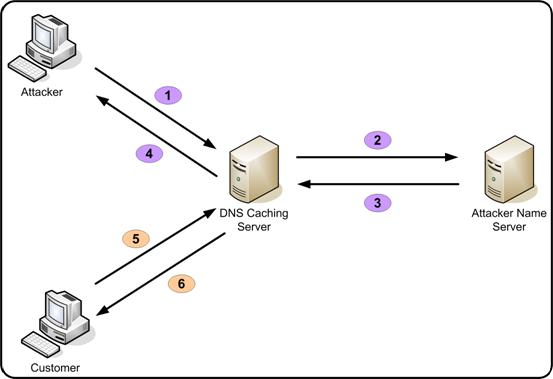In the Domain Name System (DNS) infrastructure, the caching-only name server can be a unique and vital player. Unlike typical DNS servers, it does not host local DNS databases or zone files. Instead, it specializes in resolving name lookup requests by querying other DNS servers and then caching the results. This mechanism makes caching-only name servers crucial for enhancing DNS query efficiency and reducing network load.
Our article will explore the concept of caching-only name servers, their operational dynamics, their significance in network infrastructure, and best practices for implementation and maintenance.
In this article:
- Understanding Caching-Only Name Servers
- How it Works
- Significance in Network Infrastructure
- How to Configure a Caching Name Server
- Caching Strategies and Challenges
- Conclusion: The Role in Modern Networks
- References

1. Understanding Caching-Only Name Servers
A caching-only name server, in the DNS architecture, is a specialized server that resolves domain name requests without hosting a local zone file. Its primary function is to query other authoritative DNS servers for name resolution, then store these responses in its cache. This design allows it to answer future queries for the same domain names more quickly, as it retrieves the information from its cache rather than performing another lookup.
This type of server is particularly effective in environments where repeated requests for the same domain names are common. By reducing the number of external queries, caching-only servers contribute significantly to decreasing network traffic and improving response times for DNS queries.

2. How It Works
Caching-only name servers do not have their own DNS databases. Instead, they resolve name lookup requests from resolvers by making iterative queries to other name servers.
When a request is received, the server checks its cache; if the information is not available or is outdated, it queries an authoritative server. Once it receives the response, it stores this information in its cache for a specified duration, known as the Time-To-Live (TTL). Subsequent requests for the same domain name are then served from the cache, speeding up response times and reducing the load on authoritative servers. This process exemplifies the server’s role as an intermediary, optimizing DNS resolution processes across the network.
A caching name server is not authoritative for any particular DNS domain. It can look up names that are inside or outside its own zone.
Other caching servers
Caching-only name servers aren’t the only kind of name server that performs caching of resolved queries. For example, primary name servers also cache name lookups that they perform. This caching generally improves the response of the primary name server to name lookup requests from resolvers. Caching-only name servers are distinguished by the fact that they perform only one function: issuing iterative queries to other name servers and then caching the results.
Reducing overhead of zone transfers
Caching-only name servers provide support for primary and secondary name servers in environments where name lookup traffic is heavy. Using caching-only name servers where possible also reduces the overhead of zone transfers between name servers on a network.
3. Significance in Network Infrastructure
Caching-only name servers play a significant role in optimizing network infrastructure. They reduce the load on authoritative name servers, minimize network traffic, and enhance the overall efficiency of the DNS resolution process. This is particularly beneficial in large-scale networks and ISPs, where the volume of DNS queries can be immense. By caching responses, these servers also provide redundancy, offering a level of fault tolerance and ensuring continued DNS resolution even if an authoritative server becomes unreachable.
4. How to Configure a Caching Name Server
Implementing a caching-only name server requires careful planning and adherence to best practices. Key considerations include server placement within the network, cache management, and security measures. Proper placement ensures optimal utilization of the server’s caching capabilities, while efficient cache management involves setting appropriate TTL values and regularly purging outdated records. Security is also paramount, as the server must be safeguarded against DNS poisoning and cache corruption. Regular updates and patches are necessary to maintain security integrity.
5. Caching Strategies and Challenges
Developing effective caching strategies is crucial for maximizing the benefits of a caching-only name server. This involves optimizing TTL values, managing cache size, and implementing measures to prevent cache pollution. Challenges include handling cache consistency, dealing with rapidly changing DNS records, and ensuring cache security. Addressing these challenges requires a balance between performance optimization and maintaining the accuracy and integrity of the DNS data.
6. Conclusion: The Role in Modern Networks
Caching-only name servers are indispensable in modern network architectures. Their ability to efficiently handle DNS queries not only enhances network performance but also contributes to the stability and scalability of the Internet. As network demands continue to grow, the strategic implementation of these servers will remain a critical component in the efficient functioning of DNS infrastructure.
7. References
The information in this article is supported by authoritative sources in networking and DNS technology. Key references include:
- “DNS and BIND” by Cricket Liu and Paul Albitz.
- RFC 1034 – Domain Names – Concepts and Facilities.
- RFC 1035 – Domain Names – Implementation and Specification.
- RFC 1591 – Domain Name System Structure and Delegation
- RFC 1995 – Incremental Zone Transfer in DNS
- BIND 9 – Internet Systems Consortium.
- RFC 2136 – Dynamic Updates in the Domain Name System (DNS UPDATE)